Best Continuing Care Retirement Communities: Top Picks for Senior Living
Continuing care retirement communities, also known as CCRCs, are a popular housing option for seniors who value independence and want to maintain an active lifestyle while receiving the care they need. CCRCs offer a range of services that cater to the changing needs of seniors, from independent living to assisted living and skilled nursing care.
When it comes to finding the best continuing care retirement community, there are several factors to consider. One of the most critical things to pay attention to is the type of contract offered by the community. CCRCs typically offer three types of contracts: life care, modified, and fee-for-service. Each type of contract has its own advantages and disadvantages, so it’s essential to choose the one that best fits your needs and budget.
Another important factor to consider is the location of the CCRC. It’s important to choose a community that is close to family and friends, as well as to shopping, medical facilities, and other amenities. The size and layout of the community are also important considerations, as they can affect the quality of life and level of care provided.
At our publication, we spent countless hours researching and testing various continuing care retirement communities to identify the best options for seniors. In the following sections, we’ll share our top picks and provide detailed information on what makes each community stand out.
Best Continuing Care Retirement Communities
We have researched and compiled a list of the top continuing care retirement communities available on Amazon. These communities offer a range of amenities and services to ensure that you or your loved ones receive the best care and support possible. From independent living to skilled nursing, each community on this list has been carefully selected based on their reputation, quality of care, and overall value. Whether you are looking for a retirement community for yourself or for a family member, we are confident that you will find the perfect fit on our list.
Continuing Care Retirement Communities: An Empirical, Financial, and Legal Analysis
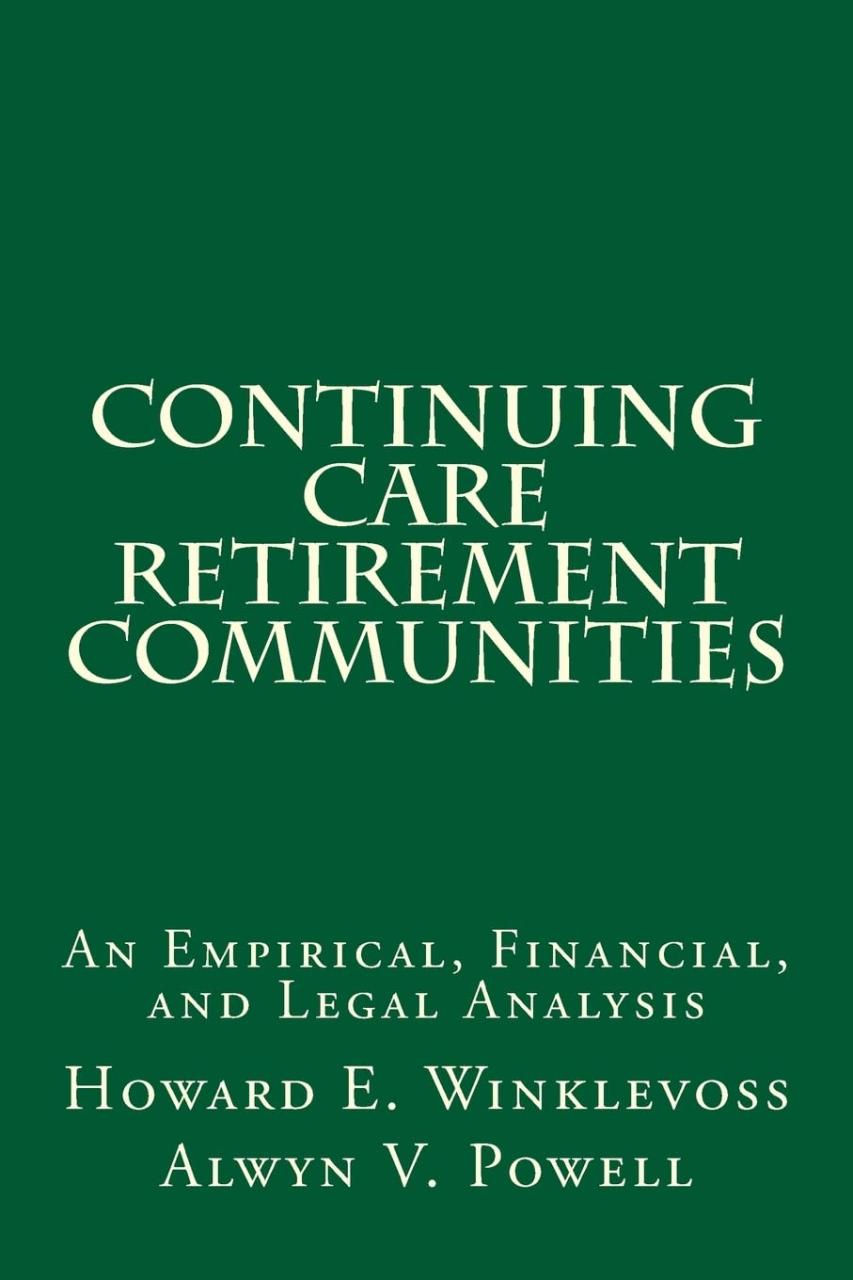
If you’re looking to purchase a comprehensive book that provides an in-depth analysis of continuing care retirement communities, then Continuing Care Retirement Communities: An Empirical, Financial, and Legal Analysis is a great option.
Pros
- Provides a detailed analysis of the financial and legal aspects of continuing care retirement communities.
- Offers empirical evidence to support its claims.
- Written by experts in the field.
Cons
- Some readers may find the information to be outdated, as the book was published in 2014.
- The book is quite dense and may be difficult to read for those without a background in finance or law.
- The book does not provide information on current statistics or recent developments in the industry.
This book is a great resource for those who want to gain a deeper understanding of continuing care retirement communities. The authors provide a thorough analysis of the financial and legal aspects of these communities, and their conclusions are supported by empirical evidence.
The book is written by experts in the field, which adds to its credibility. However, some readers may find the information to be outdated, as the book was published in 2014. Additionally, the book is quite dense and may be difficult to read for those without a background in finance or law.
Overall, if you’re looking for a comprehensive analysis of continuing care retirement communities, this book is definitely worth considering. Just keep in mind that it may not be the most accessible read for everyone.
Retirement Communities 101
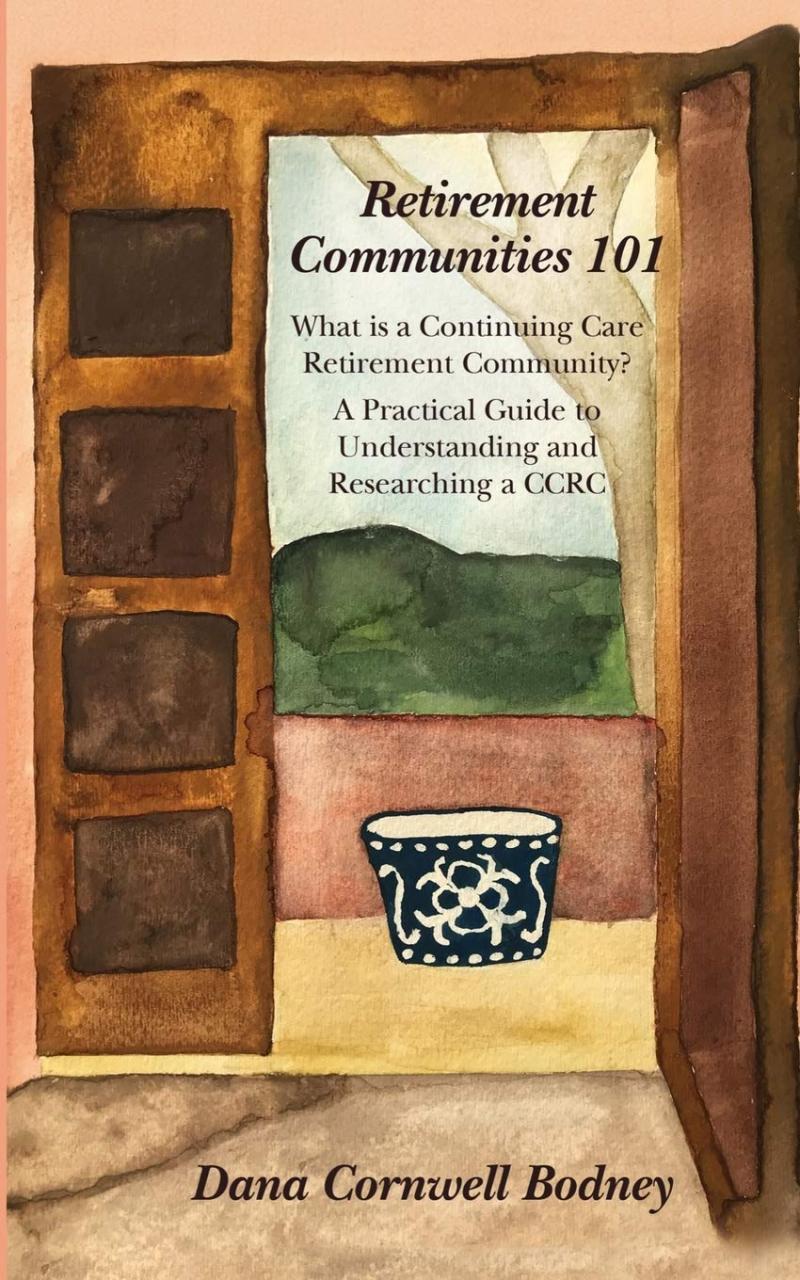
If you’re a senior citizen looking to move into a continuing care retirement community, Retirement Communities 101: What is a Continuing Care Retirement Community? A Practical Guide to Understanding and Researching a CCRC is a good starting point for you.
Pros
- Thorough information about retirement communities
- Provides a list of important questions to ask
- Helps you understand what to look for in a CCRC
Cons
- Extremely basic
- Shorter than advertised
- May not be very helpful for those who have already done some research
As someone who has been exploring CCRCs for a while, we found this book to be a bit too basic for our needs. However, for someone who is just starting out, Retirement Communities 101 provides a good introduction to the topic and covers the basics well.
The book is well-organized and provides a comprehensive list of questions to ask when researching CCRCs. It also includes helpful tips on what to look for in a community and how to evaluate the services they offer.
However, at only 83 pages (not the advertised 102), the book is quite short and may not provide enough information for those who have already done some research on the topic. Additionally, some readers may find the book too basic and not detailed enough for their needs.
Overall, we would recommend Retirement Communities 101 to anyone who is just starting to research CCRCs and needs a good introduction to the topic. However, if you’re already well-versed in the subject, you may want to look for a more in-depth resource.
A Guide To Continuing Care Communities: Where Should I Live When I Retire?
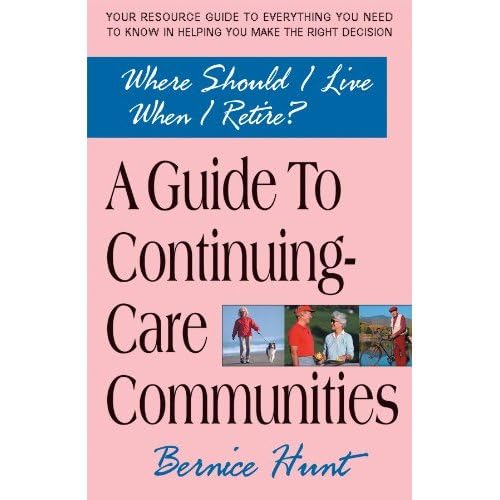
If you’re looking for a comprehensive guide to continuing care retirement communities, A Guide To Continuing Care Communities: Where Should I Live When I Retire? is a great choice.
Pros
- Practical and informative
- Written by someone who researched the topic thoroughly
- Warm and personal tone
Cons
- Some information may be outdated
- Relatively short book
- Limited reviews
This book is a great resource for anyone considering a continuing care retirement community. It provides practical advice and information, while still maintaining a warm and personal tone. The author, Bernice Hunt, has researched the topic thoroughly and shares her own experiences to help readers make informed decisions.
One potential downside is that the book was published in 2006, so some of the information may be outdated. Additionally, at only 112 pages, it’s a relatively short read. Finally, there are only a limited number of reviews available, which may make it harder to gauge the book’s usefulness.
Overall, if you’re looking for a starting point for your research into continuing care retirement communities, A Guide To Continuing Care Communities: Where Should I Live When I Retire? is a solid choice.
Continuing Care Retirement Communities: An Insider Tells All (Second Edition)
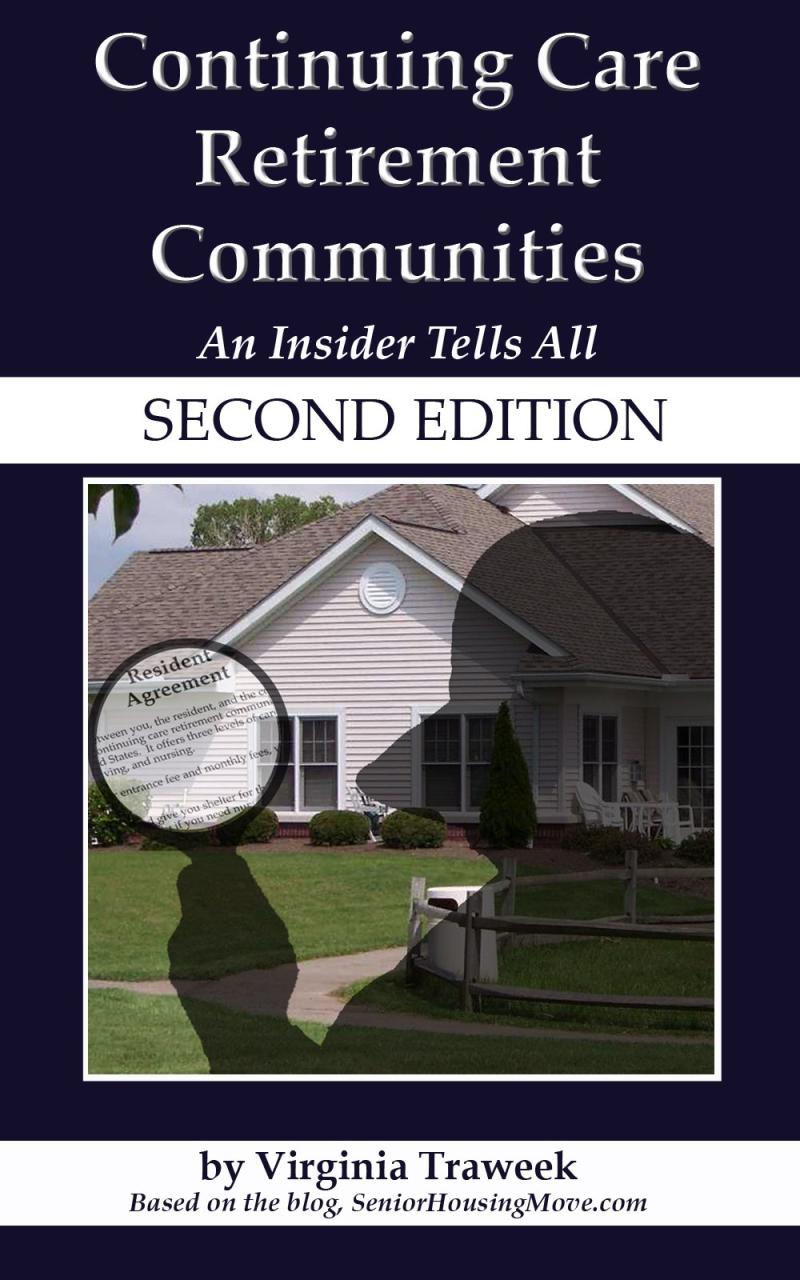
If you’re considering a continuing care retirement community, Continuing Care Retirement Communities: An Insider Tells All (Second Edition) is a must-read book that provides valuable insights into the world of CCRCs.
Pros
- Provides an insider’s perspective on CCRCs
- Offers unbiased and comprehensive information on the financial aspects of CCRCs
- Helps readers make informed decisions about CCRCs
Cons
- Some readers may find the book too technical or dry
- Limited information on specific CCRCs
- Only available in Kindle format
In this book, Virginia Traweek shares her extensive knowledge and experience in the senior housing industry to help readers understand the benefits and drawbacks of CCRCs. The book covers a wide range of topics, including the different types of CCRCs, the financial aspects of CCRCs, and the application process.
One of the book’s biggest strengths is its unbiased approach to the financial aspects of CCRCs. Traweek provides a clear and comprehensive explanation of the various fee structures and contract types, which can be confusing for those unfamiliar with CCRCs. This information is invaluable for anyone considering a CCRC, as it can help them make an informed decision about the financial implications of moving into a CCRC.
Another key strength of the book is its insider’s perspective on CCRCs. Traweek draws on her experience working in the senior housing industry to provide readers with a behind-the-scenes look at how CCRCs operate. This information can help readers better understand what to expect from a CCRC and make an informed decision about whether a CCRC is right for them.
While the book is packed with valuable information, some readers may find it too technical or dry. Additionally, the book focuses more on general information about CCRCs rather than specific information about individual CCRCs. Finally, the book is only available in Kindle format, which may be a drawback for those who prefer physical books.
Overall, Continuing Care Retirement Communities: An Insider Tells All (Second Edition) is a valuable resource for anyone considering a CCRC. Its comprehensive and unbiased approach to the financial aspects of CCRCs, combined with its insider’s perspective on the industry, make it a must-read for anyone looking to make an informed decision about their retirement living options.
CCRCs: Find the Right Continuing Care Retirement Community for Yourself Or a Loved One
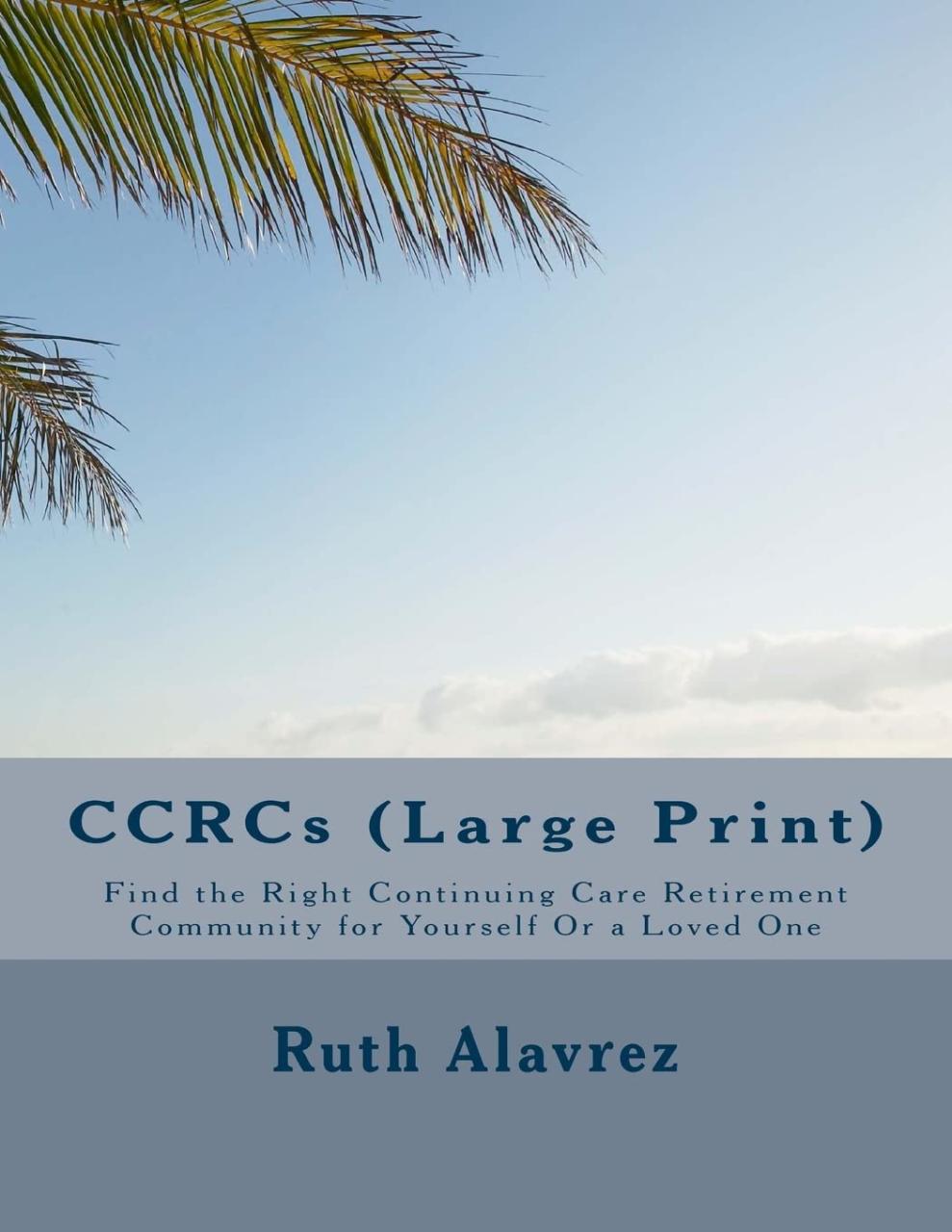
If you’re looking for a comprehensive guide to continuing care retirement communities, CCRCs: Find the Right Continuing Care Retirement Community for Yourself Or a Loved One is a great resource.
Pros
- Provides detailed information on different types of CCRCs
- Offers guidance on how to choose the right CCRC for you or your loved one
- Written in large print for easy reading
Cons
- May not include the most up-to-date information
- Some readers may find the information overwhelming
- May not be as helpful for those looking for CCRCs outside of the United States
This guide is a valuable resource for anyone considering a continuing care retirement community. It offers detailed information on the different types of CCRCs available, including the pros and cons of each. The guide also provides guidance on how to choose the right CCRC for you or your loved one, including questions to ask and factors to consider.
One of the benefits of this guide is that it is written in large print, making it easy to read for those with visual impairments. However, some readers may find the amount of information overwhelming. Additionally, as with any printed guide, the information may not be the most up-to-date.
Overall, if you’re looking for a comprehensive guide to CCRCs, this is a great resource to consider. Just be aware that it may not be as helpful for those looking for CCRCs outside of the United States.
Buying Guide
When choosing a continuing care retirement community, it’s important to consider several factors to ensure that you find the best fit for your needs. Here are some key features to look for when making your decision:
Levels of Care
One of the most important things to consider is the range of care options offered by the community. Make sure that the community provides a full continuum of care, including independent living, assisted living, and skilled nursing care. This will ensure that you can remain in the same community even if your needs change over time.
Location and Amenities
Consider the location of the community and the amenities it offers. Is it close to family and friends? Does it offer easy access to shopping, dining, and entertainment? Are there plenty of social activities and events to keep you engaged and active?
Staff and Services
Take the time to get to know the staff and services offered by the community. Are the staff friendly and knowledgeable? Do they provide personalized care and attention? Are there plenty of services available, such as transportation, housekeeping, and meal preparation?
Financial Considerations
Finally, consider the financial aspects of the community. Make sure that the community is financially stable and has a good reputation. Consider the costs of living in the community and whether it fits within your budget. Be sure to ask about any additional fees or charges that may apply.
By considering these key features, you can find the best continuing care retirement community for your needs.
Frequently Asked Questions
What are the top factors to consider when selecting a continuing care retirement community?
When selecting a continuing care retirement community, it’s important to consider factors such as location, cost, contract options, amenities, and services. It’s also important to research the community’s reputation and history, as well as its financial stability.
How do continuing care retirement communities differ from other senior housing options?
Continuing care retirement communities offer a range of housing options and provide residents with access to a continuum of care services, including assisted living, memory care, and skilled nursing care. This means that residents can age in place and receive the care they need without having to move to a new community. Other senior housing options, such as independent living communities or nursing homes, may not offer the same range of care services.
What are the typical contract types offered by continuing care retirement communities?
Continuing care retirement communities typically offer three types of contracts: Type A, Type B, and Type C. Type A contracts are the most expensive but offer the most comprehensive coverage, including unlimited access to healthcare services. Type B contracts offer a lower entrance fee and a lower monthly fee but may require residents to pay for healthcare services as needed. Type C contracts offer the lowest entrance fee but require residents to pay for healthcare services at full market rates.
At what age should one consider moving into a continuing care retirement community?
There is no specific age at which one should consider moving into a continuing care retirement community. However, many people start exploring their options in their 60s or 70s, while they are still healthy and active. This allows them to plan for the future and ensure they have access to the care they need as they age.
What amenities and services should one expect from a high-quality continuing care retirement community?
High-quality continuing care retirement communities offer a range of amenities and services, including fitness centers, swimming pools, restaurants, transportation services, and social and recreational activities. They also provide access to healthcare services, including medical care, rehabilitation services, and memory care.
How do the costs and fees of continuing care retirement communities compare to traditional retirement options?
Continuing care retirement communities are generally more expensive than traditional retirement options, such as staying in one’s own home or moving to an independent living community. However, they offer the peace of mind that comes with knowing that one has access to the care they need as they age. It’s important to carefully consider the costs and fees of each option and to choose the one that best meets one’s needs and budget.